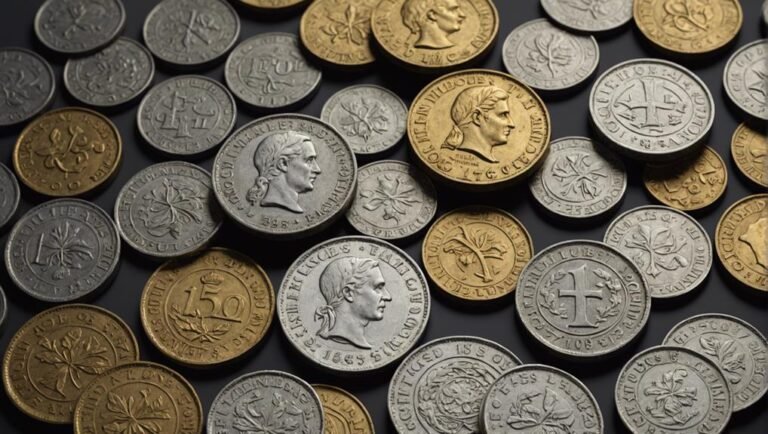What Is a Bank Draft? Definition, How It Works, and Example
A bank draft is a secure payment method issued by a bank, with enhanced security features like watermarks. It is a reliable choice for larger transactions, guaranteeing payment to the recipient and reducing the risk of bounced checks. The mechanism is structured, backed by the issuing bank, and minimizes payment risks. Understanding associated costs and potential cancellation implications is crucial, as once delivered, a bank draft is irrevocable. While more secure than money orders, bank drafts might have higher costs. Exploring applications and benefits can provide further insights into using bank drafts effectively.
Key Takeaways
- Bank draft is a secure payment method issued by a bank.
- It guarantees payment to the recipient and offers enhanced security features.
- Bank drafts eliminate the risk of bounced checks and are preferred for larger transactions.
- The working mechanism involves a structured process backed by the issuing bank.
- Cancelling a bank draft may incur costs, and it cannot be reversed once delivered.
Bank Draft Definition
In the domain of financial transactions, a bank draft stands as a secure and guaranteed payment method issued by a bank on behalf of the payer. Bank drafts offer security features such as watermarks and unique identifiers, ensuring their authenticity.
The advantages of bank drafts include being a preferred method for larger transactions where the payee requires assurance of payment. When requesting a bank draft, banks typically charge a fee for the service, which can vary depending on the financial institution.
The issuance process involves the payer requesting the bank draft, the bank debiting the payer’s account for the draft amount, and guaranteeing payment to the payee upon deposit. This method provides a secure way to transfer funds between accounts.
Bank Draft Characteristics
Bank drafts possess distinctive features that distinguish them as a secure and reliable payment method issued by banks on behalf of payers. The advantages of bank drafts include enhanced security measures such as watermarks and unique identifiers, making them less susceptible to fraud.
Additionally, bank drafts provide a guarantee of payment to the recipient, eliminating the risk of bounced checks. They are widely accepted for various transactions, suitable for international trade and commerce, and offer a secure way to make large payments.
Compared to personal checks, bank drafts are more secure and are particularly beneficial for significant transactions where cash may not be practical or safe.
Working Mechanism of Bank Drafts
Utilizing a bank draft involves a structured process that guarantees secure and guaranteed payment transactions. One major advantage of bank drafts is the level of security they offer, as they are backed by the issuing bank, ensuring that the funds are available. This eliminates the risk of bounced payments, providing peace of mind to both the payer and the payee.
However, a common misconception is that bank drafts are always free from fraud, which is not entirely true. While they are secure, individuals should still be cautious of potential scams or counterfeit drafts.
Cancellation and Costs of Bank Drafts
When considering bank drafts, it is imperative to understand the associated costs and the implications of cancellation. Reversing a bank draft transaction may require redeeming the full draft amount, as some banks do not allow stop payments on issued drafts.
Cancelling or replacing lost drafts often necessitates specific documentation. Costs for bank drafts vary among financial institutions and may be either flat fees or a percentage of the draft amount. For example, TD Bank charges $9.95 for issuing a bank draft.
Once a bank draft is delivered to the payee, it cannot be cancelled. Losing a bank draft might require obtaining a new one, involving additional steps and potential financial implications.
Bank Drafts Vs. Money Orders
In comparing bank drafts to money orders, a key distinction lies in the source of funds used for the transactions. Bank drafts involve funds drawn from the issuer’s account, ensuring security and guarantee by the issuing bank. On the other hand, money orders utilize cash, with limits imposed on amounts due to money laundering concerns. To further differentiate the two, consider the following:
Bank Draft Security:
- Funds are verified by the bank before issuing the draft.
- Security features like watermarks are included for authenticity.
Money Order Limits:
- Imposed restrictions on the maximum amount that can be issued.
- Lower cost compared to bank drafts due to the cash-based nature.
Applications and Benefits of Bank Drafts
Bank drafts offer a secure and reliable method for facilitating major financial transactions, providing assurance to both parties involved. They are particularly useful for international transactions and secure payments. Here is a table highlighting some applications and benefits of bank drafts:
| Applications | Benefits | Examples |
|---|---|---|
| Individual purchasing high-value item | More secure than cash | Buying a car |
| Company making international payments | Guarantees payment to recipient | Paying suppliers |
| Landlord collecting rent from tenants | Eliminates risk of bounced checks | Collecting monthly rent |
| Government agencies issuing payments | Widely accepted for various transactions | Issuing social security payments |
| Businesses paying suppliers | Suitable for international trade and commerce | Importing goods |
Bank Draft Example
An illustration showcasing the practical application of a bank draft in a real-world financial transaction will elucidate the process with clarity and precision.
Bank Draft Process:
- Payer requests a bank draft from their bank.
- Bank verifies the payer’s account balance.
- Bank issues a draft for the specified amount.
- Payee receives and deposits the draft into their account.
Bank Draft Advantages:
- Secure method for large payments.
- Guarantees payment to the recipient.
- Eliminates the risk of bounced checks.
- Widely accepted for various transactions.
Conclusion
To sum up, bank drafts serve as a secure and reliable method for facilitating large financial transactions. Their unique characteristics, working mechanism, and cost considerations distinguish them from other payment instruments like money orders.
By understanding the applications and benefits of bank drafts, individuals and businesses can effectively utilize this payment method in various scenarios.
Ultimately, embracing the use of bank drafts can provide an added layer of security and assurance in the domain of financial transactions.







